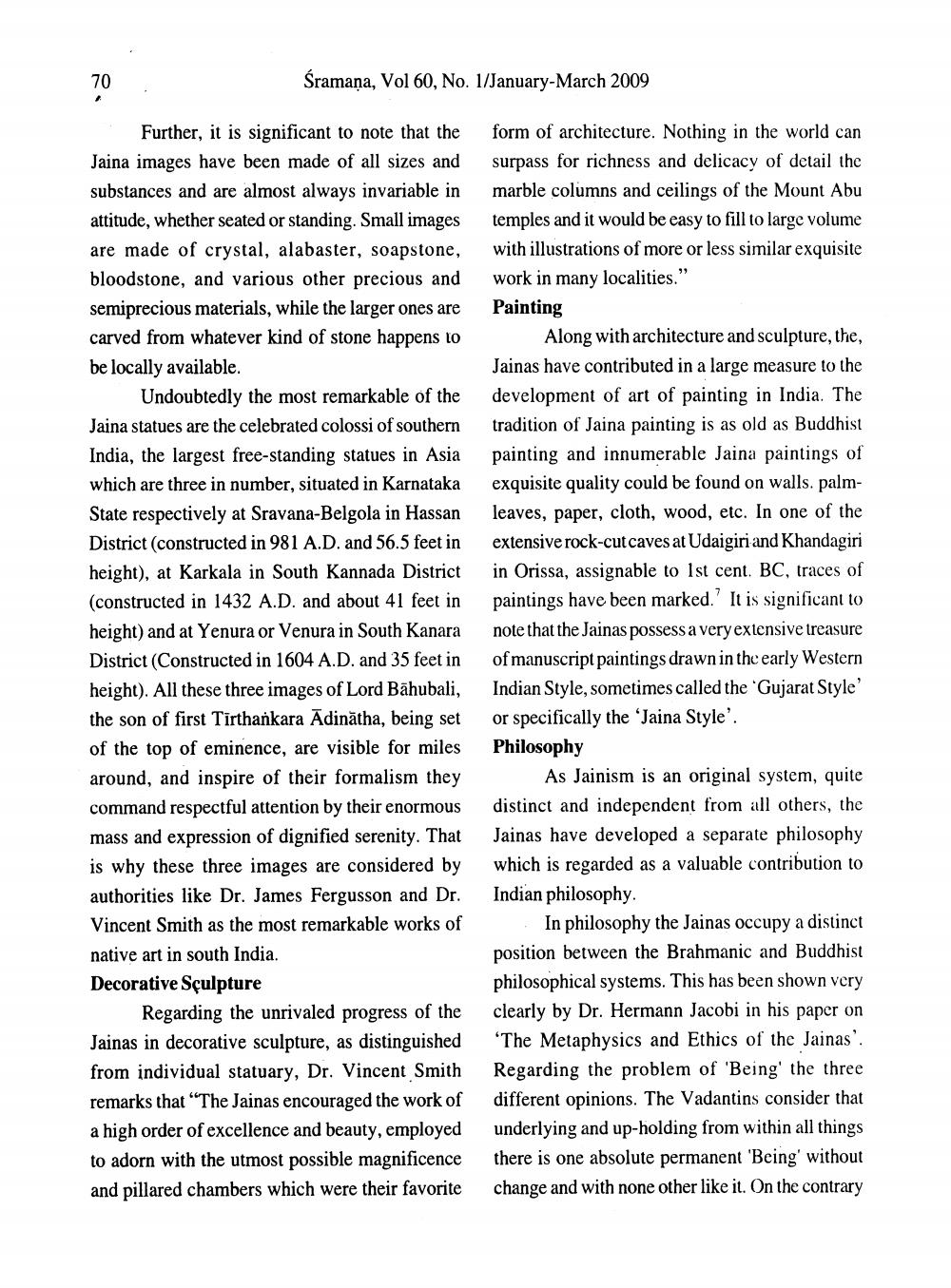________________
Śramaņa, Vol 60, No. 1/January-March 2009
Further, it is significant to note that the Jaina images have been made of all sizes and substances and are almost always invariable in attitude, whether seated or standing. Small images are made of crystal, alabaster, soapstone, bloodstone, and various other precious and semiprecious materials, while the larger ones are carved from whatever kind of stone happens to be locally available.
Undoubtedly the most remarkable of the Jaina statues are the celebrated colossi of southern India, the largest free-standing statues in Asia which are three in number, situated in Karnataka State respectively at Sravana-Belgola in Hassan District (constructed in 981 A.D. and 56.5 feet in height), at Karkala in South Kannada District (constructed in 1432 A.D. and about 41 feet in height) and at Yenura or Venura in South Kanara District (Constructed in 1604 A.D. and 35 feet in height). All these three images of Lord Bāhubali, the son of first Tirthankara Ēdinātha, being set of the top of eminence, are visible for miles around, and inspire of their formalism they command respectful attention by their enormous mass and expression of dignified serenity. That is why these three images are considered by authorities like Dr. James Fergusson and Dr. Vincent Smith as the most remarkable works of native art in south India. Decorative Sculpture
Regarding the unrivaled progress of the Jainas in decorative sculpture, as distinguished from individual statuary, Dr. Vincent Smith remarks that “The Jainas encouraged the work of a high order of excellence and beauty, employed to adorn with the utmost possible magnificence and pillared chambers which were their favorite
form of architecture. Nothing in the world can surpass for richness and delicacy of detail the marble columns and ceilings of the Mount Abu temples and it would be easy to fill to large volume with illustrations of more or less similar exquisite work in many localities." Painting
Along with architecture and sculpture, the, Jainas have contributed in a large measure to the development of art of painting in India. The tradition of Jaina painting is as old as Buddhist painting and innumerable Jaina paintings of exquisite quality could be found on walls, palmleaves, paper, cloth, wood, etc. In one of the extensive rock-cut caves at Udaigiri and Khandagiri in Orissa, assignable to Ist cent. BC, traces of paintings have been marked. It is significant to note that the Jainas possess a very extensive treasure of manuscript paintings drawn in the early Western Indian Style, sometimes called the 'Gujarat Style or specifically the 'Jaina Style'. Philosophy
As Jainism is an original system, quite distinct and independent from all others, the Jainas have developed a separate philosophy which is regarded as a valuable contribution to Indian philosophy.
In philosophy the Jainas occupy a distinct position between the Brahmanic and Buddhist philosophical systems. This has been shown very clearly by Dr. Hermann Jacobi in his paper on 'The Metaphysics and Ethics of the Jainas'. Regarding the problem of 'Being the three different opinions. The Vadantins consider that underlying and up-holding from within all things there is one absolute permanent 'Being' without change and with none other like it. On the contrary
ру.




